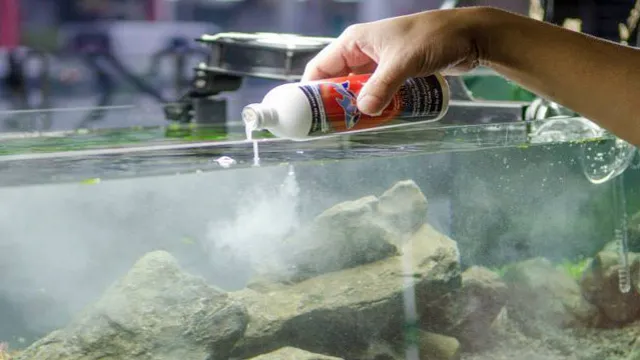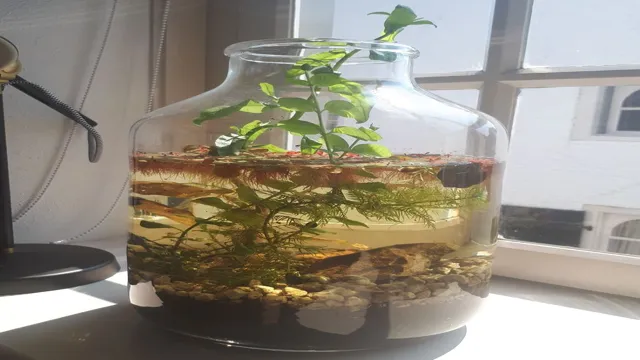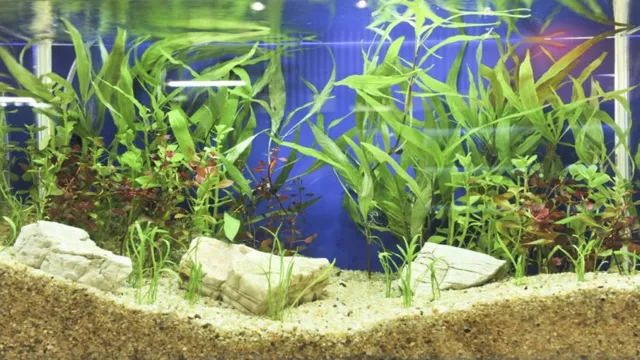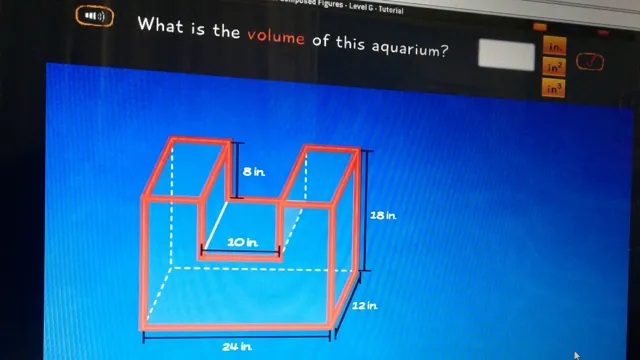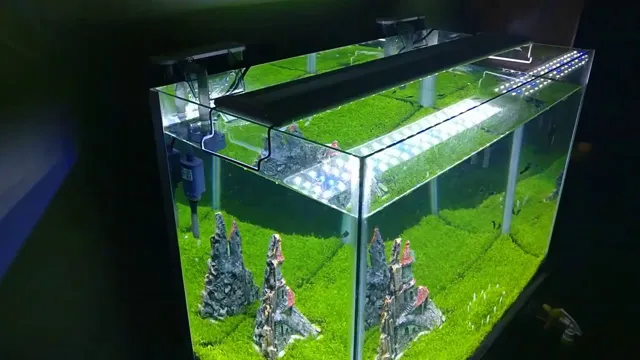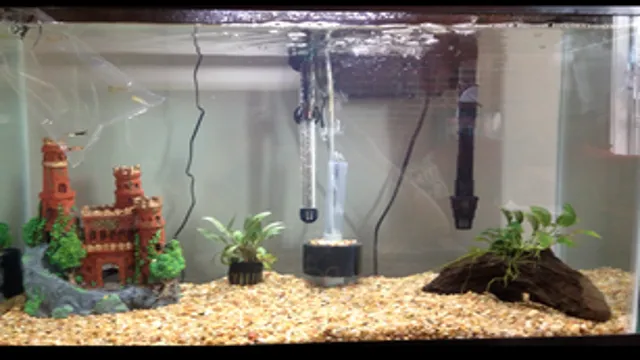Ah, the tranquility of a perfectly set-up fish aquarium. The soothing sight of colorful, gracefully swimming fish and the gentle hum of an efficient filter can be the ultimate stress-relief for many of us. Whether you are new to fish-keeping or are just looking to brush up on your skills, starting a fish aquarium can be an exciting and fulfilling hobby.
However, as opposed to what many think, it’s not quite as simple as just getting a tank, some fish, and sticking them together. There are several crucial aspects to consider, such as tank size and placement, type of fish, filtration systems, feeding, and maintenance. Therefore, to help you start and maintain your aquarium successfully, this comprehensive guide will cover everything you need to know, from fish selection to maintenance tips and tricks.
Get ready to dive into the world of fish-keeping and let’s explore the captivating world of aquariums together!
Setting Up Your Tank
Starting a fish aquarium can be an exciting experience, but it’s important to properly set up your tank to ensure the health and happiness of your aquatic pets. The first step is to choose a suitable location for your tank, away from direct sunlight and drafts. Next, you’ll need to choose the appropriate size, shape, and material for your tank.
Once you have your tank, it’s time to add the necessary equipment and decorations, such as a filter, heater, substrate, and plants or ornaments. Before adding any fish, it’s important to cycle your tank to build up beneficial bacteria that will help break down waste. This can take several weeks, so be patient.
Once your tank is cycled, you can start adding fish slowly, monitoring water parameters and making adjustments as needed. Remember that different species of fish have different needs, so research their requirements before adding them to your tank. With proper setup and care, your fish aquarium can provide hours of enjoyment and relaxation.
Choose the Right Tank Size and Location
Setting up your aquarium requires careful consideration when it comes to choosing the right tank size and location. It’s important to select a tank that can accommodate the size and number of fish you plan on owning, as well as any necessary equipment such as filters and heaters. In terms of location, it’s best to choose a spot that is away from direct sunlight and extreme temperature changes.
When selecting a tank size, it’s a good rule of thumb to choose one gallon of water per inch of fish. This will ensure that your fish have enough space to swim and live comfortably. Additionally, consider the overall dimensions of the tank as taller tanks may not be suitable for certain fish species that require a wider swimming area.
In terms of location, consider placing your tank in a spot that is away from direct sunlight or extreme temperature changes from nearby windows or heating vents. This can cause temperature fluctuations in the tank and ultimately harm your fish. It’s also important to choose a location that can support the weight of the tank when filled with water, as well as provide easy access to an electrical outlet for necessary equipment.
By taking the time to carefully select the right tank size and location, you’ll ensure that your fish can thrive in their new home. Remember, the size of the tank and its location play crucial roles in the overall health and well-being of your aquatic pets.
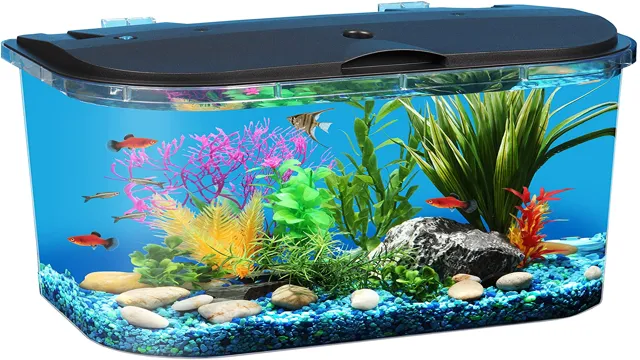
Add Substrate and Decorations
When it comes to setting up your aquarium, adding substrate and decorations is an important step in creating a comfortable and stimulating environment for your aquatic pets. Substrate provides a natural base for your tank and is essential for the growth of live plants. There are a variety of substrates to choose from, such as sand or gravel, with different colors and sizes to fit your personal preference.
Along with substrate, decorations add character and dimension to your aquarium. Rocks, driftwood, and artificial plants not only provide a pleasing aesthetic, but also give your fish places to hide and explore. Before placing these items in your tank, make sure to thoroughly wash them to remove any harmful chemicals or debris.
With the addition of substrate and decorations, you can create a vibrant and comfortable home for your fish to thrive in.
Install Filtration System and Heater
One important aspect of setting up your aquarium is installing a filtration system and heater. A filtration system helps to keep the water clean and clear, removing any harmful toxins that could harm your fish or plants. When selecting a filtration system, make sure to choose one that is appropriate for the size of your tank and the type of fish you have.
Additionally, a heater is crucial in maintaining a consistent water temperature, as some fish species require specific temperatures to thrive. It’s important to research the ideal temperature range for your fish species before selecting a heater. Once you have both the filtration system and heater in place, you’ll be well on your way to creating a healthy and thriving environment for your aquatic pets.
Choosing the Right Fish
When starting a fish aquarium, it is important to choose the right fish to add. You want to make sure you select fish that are compatible with each other, as well as fish that are appropriate for the size of your tank. Additionally, you want to choose fish that are hardy and easy to take care of, especially if you are new to fishkeeping.
Some good options for beginners include bettas, guppies, and mollies, which are all small and relatively easy to care for. It’s also important to consider the water conditions required by each species of fish, such as the water temperature and pH level. By doing your research and carefully selecting the right fish for your tank, you can ensure a healthy and thriving aquarium for years to come.
Research Different Types of Fish
When considering the type of fish to keep, it is important to take several factors into account. The first question to ask yourself is what kind of environment can you provide for your fish. Some species require a large tank with plenty of decorations and hiding places, while others do well in a simple setup with only a few plants or rocks. (See Also: How to Clear Cloudy Saltwater Aquarium Water: 6 Effective Tips for a Crystal Clear Tank)
Consider the water conditions that your chosen species requires—water temperature, pH levels, and salinity are all important factors that can affect your fish’s health. Another important consideration is the type of diet your fish will need to thrive. Some fish are strictly herbivores, while others require a mix of plant and animal-based foods.
Finally, you should consider the temperament of your fish and if it will be compatible with any other species you plan to keep. With these factors in mind, you’ll be able to choose the right fish for your setup, ensuring both the happiness of your fish and your own enjoyment as a fish owner.
Consider Tank Size and Compatibility
When it comes to choosing the right fish for your tank, there are a few important factors to consider. One of the most crucial is the size of your tank. You should always choose fish that are appropriate for the size of your tank, as overcrowding can lead to stress and health issues for your fish.
Additionally, you’ll want to consider the compatibility of your fish. Some species are more aggressive than others, and certain fish may not get along well with others in your tank. It’s important to do your research and choose fish that will coexist peacefully.
Remember, choosing the right fish for your tank is all about creating a balanced ecosystem that will thrive over the long term. By keeping size and compatibility in mind, you’ll be well on your way to creating a healthy and happy aquarium for all of your fish.
Choose a Few Fish to Start
When you’re just starting with your own fish tank, it’s important to choose the right fish. Too often, new hobbyists will try to add too many types of fish to their tank at once and end up with a mess. My advice is to start with just a few fish and wait a few weeks before adding more.
You want to ensure that the tank has enough space and that the fish get along with each other. It’s also important to research each type of fish to ensure that they can thrive in the same environment. For example, some fish enjoy warmer water while others prefer cooler water.
By starting with just a few fish and ensuring that they are compatible with each other’s needs, you’ll create a healthy and happy fish tank that you can build upon over time. Remember, the key is to choose quality over quantity. By starting small, you’ll have a better chance of success and enjoyment in your new hobby.
Cycling Your Tank
One important step in setting up a fish aquarium is cycling your tank. This process helps establish a healthy environment for your fish by allowing beneficial bacteria to build up in the tank. To start, fill the tank with water and add a source of ammonia, such as fish food or pure ammonia solution.
Monitor the ammonia, nitrite, and nitrate levels using a testing kit. Initially, ammonia levels will spike before dropping and nitrite levels will rise. Once nitrite levels begin to fall and nitrates start to appear, the tank is considered cycled and ready for fish.
The cycling process can take anywhere from a few weeks to a few months, so patience is key. Remember, the health and well-being of your fish depend on the proper cycling of your tank. By following these steps, you can ensure a successful and lasting aquarium experience.
Understand the Nitrogen Cycle
Cycling your tank is an essential process that all aquarium owners should understand to keep their fish healthy and happy. A crucial part of this process is understanding the nitrogen cycle. This cycle is the process of the breakdown of fish waste and other organic matter into less harmful substances, allowing for healthy bacteria to thrive in your tank.
The cycle involves three steps: ammonia buildup, nitrite buildup, and nitrate buildup. In the first step, fish produce ammonia through their waste, which will harm them if not broken down. The second step involves bacteria converting ammonia into nitrites, which are also harmful to fish.
Finally, beneficial bacteria convert nitrites into nitrates, which are less harmful and can be removed from the water through routine maintenance. By understanding and maintaining the nitrogen cycle, you can ensure that your aquarium is a thriving, healthy environment for your fish to call home.
Add Beneficial Bacteria to Your Tank
Cycling your tank is a crucial process that establishes a healthy environment for your aquatic pets. This process involves introducing beneficial bacteria into the tank that convert toxic ammonia into less harmful compounds such as nitrite and eventually nitrates. Without cycling, these toxins can harm your fish and lead to diseases or death.
There are different ways to cycle a tank, but one of the easiest methods is by using bacteria supplements such as BioSpira or Tetra SafeStart Plus. These bacteria supplements contain live nitrifying bacteria that can quickly colonize your tank and jumpstart the cycling process. Simply add the bacteria to your filter or directly into the tank following the instructions on the bottle.
After a few days, test your water parameters, and monitor them closely throughout the cycling process. Cycling a tank can take anywhere from a few weeks to a couple of months, depending on the size of your tank and the type of fish you plan to keep. Once the process is complete, you can add your fish gradually, avoiding any sudden spikes in toxins that could stress or kill your pets.
Remember, introducing bacteria supplements to your cycling process can help you establish a healthy and thriving aquatic ecosystem for your pets, and it’s always better to be safe than sorry. (See Also: How to Get Rid of Brown Moss on Aquarium Plants: 5 Effective Solutions)
Test Water Parameters Regularly
Test Water Parameters Regularly Cycling your tank is an essential process that helps establish a healthy and stable environment for your aquatic pets. Before you introduce your fish, you need to cycle the tank, which involves growing beneficial bacteria that convert harmful toxins into less harmful substances. However, testing water parameters regularly is crucial to ensure that the cycling process is running smoothly.
You need to test for ammonia, nitrite, nitrate, and pH levels at least once every week. Elevated levels of ammonia and nitrite can be toxic to your fish, while high nitrate levels can cause algae bloom. Maintaining an appropriate pH level is also crucial because the wrong pH can stress your fish and compromise their health.
By monitoring and adjusting water parameters, you can keep your fish healthy and happy in their new home.
Feeding and Maintenance
One of the most critical aspects of starting a fish aquarium is feeding and maintenance. Proper feeding and maintenance are crucial to the health and well-being of your fish. It is essential to establish a regular feeding schedule that is appropriate for the specific type of fish in your aquarium.
Overfeeding can cause excess waste and algae growth, which can lead to unhealthy conditions in the tank. It’s also important to maintain proper water conditions by regularly testing the water and performing necessary water changes. Keeping your aquarium clean and well-maintained will not only create a healthy environment for your fish but also enhance the beauty of your aquarium.
Following a regular schedule for feeding and maintenance will help ensure your fish stay healthy and happy for years to come.
Feed Your Fish Properly
Feeding your fish the appropriate amount and quality of food is critical for their well-being. Overfed fish can damage your aquarium’s water quality and stress your fish, while underfed fish can suffer from malnutrition and become more vulnerable to disease. When considering how often to feed them, keep in mind that different types of fish have different dietary requirements.
Some fish may need to be fed daily, while others may require smaller, more frequent meals. Additionally, ensure that you are providing the right type of food for your fish. Pellets and flakes are commonly used as fish food, but other options such as live or frozen foods can be purchased for more particular species.
It is also essential to ensure that the food you are giving to your fish complies with their dietary requirements to improve their health. Remember that fish are living creatures, and they rely on you for everything, including their nutrition. So, take the time to learn and understand what your fish need to live a long and happy life.
Maintain Water Quality through Regular Water Changes
Maintaining water quality is crucial to the health and wellbeing of fish and other aquatic creatures. One effective way to achieve this is through regular water changes. As fish eat and produce waste, toxins and other harmful compounds build up in the water.
If left unchecked, this can lead to poor water quality, resulting in sick or even dead fish. But don’t worry, changing the water doesn’t have to be complicated. For most aquariums, changing approximately 10-20% of the water every week is sufficient.
It’s also important to make sure the water temperature and pH levels are consistent before adding it back into the tank. By staying on top of regular water changes, you can ensure that your fish and other aquatic pets thrive in a healthy and safe environment. So, don’t forget to make water changes a regular part of your feeding and maintenance routine!
Monitor Your Fish for Signs of Illness
When it comes to keeping your fish healthy, monitoring their behavior and appearance is critical. Any changes in their behavior or appearance may indicate an underlying health issue that needs attention. While feeding your fish regularly is important for their well-being, it’s equally important to keep up with their maintenance routine.
This includes regular water changes, filter maintenance, and keeping their tanks clean. Pay attention to any signs of illness such as loss of appetite, lethargy, discoloration, fin damage, or abnormal swimming behavior. Early detection and treatment of fish illnesses can go a long way in ensuring your fish live long and healthy lives.
Remember, prevention is always better than cure. So, in addition to monitoring your fish, it’s important to provide them with a healthy diet, a comfortable environment, and a stress-free life. By doing so, you will have happy, healthy fish that will bring you joy for years to come.
Conclusion: Enjoying Your Aquarium
In conclusion, starting a fish aquarium requires more than just dumping water and fish into a tank. It’s about creating a harmonious underwater ecosystem where aquatic life can thrive. Just like any relationship, it’s all about the details.
From choosing the right tank size, to adding the proper substrate, plants, and decorations, to selecting compatible fish species, and monitoring water quality, everything matters. So remember, before you dive into the world of fishkeeping, do your research and take the time to properly set up your aquarium. Your fish will thank you for it!” (See Also: How to Clean Acrylic Glass Aquarium: 5 Steps for Sparkling Clear Water)
Patience is Key in Fishkeeping
If you want to become a successful fishkeeper, patience is key. This is especially true when it comes to feeding and maintenance. It’s important to stick to a regular feeding schedule, making sure to not over or underfeed your fish.
Overfeeding can lead to health problems and dirty water, while underfeeding can lead to malnutrition and stunted growth. Additionally, maintaining your aquarium takes time and effort. It’s important to regularly test the water for ammonia, nitrite, and nitrate levels, and perform weekly water changes.
It can be tempting to rush through these tasks, but taking your time and being thorough is essential to the well-being of your fish. Remember, being a successful fishkeeper isn’t something that happens overnight. It takes time and dedication to create a healthy and thriving aquatic environment for your fish.
So be patient, and enjoy the journey.
Take Time to Enjoy Your Aquarium
Feeding and maintaining your aquarium is crucial for the well-being of your fish and other aquatic life. As a hobbyist, it’s important to take the time to enjoy your aquarium while ensuring that your fish are healthy and happy. When it comes to feeding, you want to make sure that you are feeding the appropriate amount for the number of fish in your tank.
Overfeeding can lead to water quality issues and health problems for your fish. It’s also important to vary your fish’s diet to ensure they are getting all the necessary nutrients. Additionally, regular maintenance, such as water changes and filter cleaning, is important to maintain a healthy tank environment.
Remember, taking care of your aquarium should be a fun and enjoyable experience for you and your fish!
FAQs
What size aquarium should I get for my fish?
The size of the aquarium depends on the number and size of fish you plan to keep. Generally, it’s recommended to have one gallon of water per inch of adult fish.
How often should I change the water in my fish aquarium?
You should change at least 25% of the water in your aquarium once a month. It’s also important to remove any uneaten food or debris on a regular basis.
Can I add any fish to my aquarium?
It’s important to research the specific requirements and compatibility of different fish before adding them to your aquarium. Not all species can live together peacefully.
How do I cycle my fish aquarium?
Cycling your aquarium involves establishing beneficial bacteria that break down waste. This is done by adding a source of ammonia, and allowing the bacteria to grow over several weeks before adding fish.
Should I use a heater in my fish aquarium?
Some fish require a specific temperature range to thrive, so a heater may be necessary. Check the temperature requirements for your specific fish species.
How often should I feed my fish?
The feeding schedule and amount of food will depend on the species of fish. Generally, it’s recommended to feed small amounts once or twice a day. Overfeeding can lead to health issues and polluted water.
What equipment do I need for a fish aquarium?
In addition to the aquarium, you’ll need a filter, heater (if necessary), substrate, decorations, and appropriate lighting. It’s also important to monitor water parameters with a test kit.


